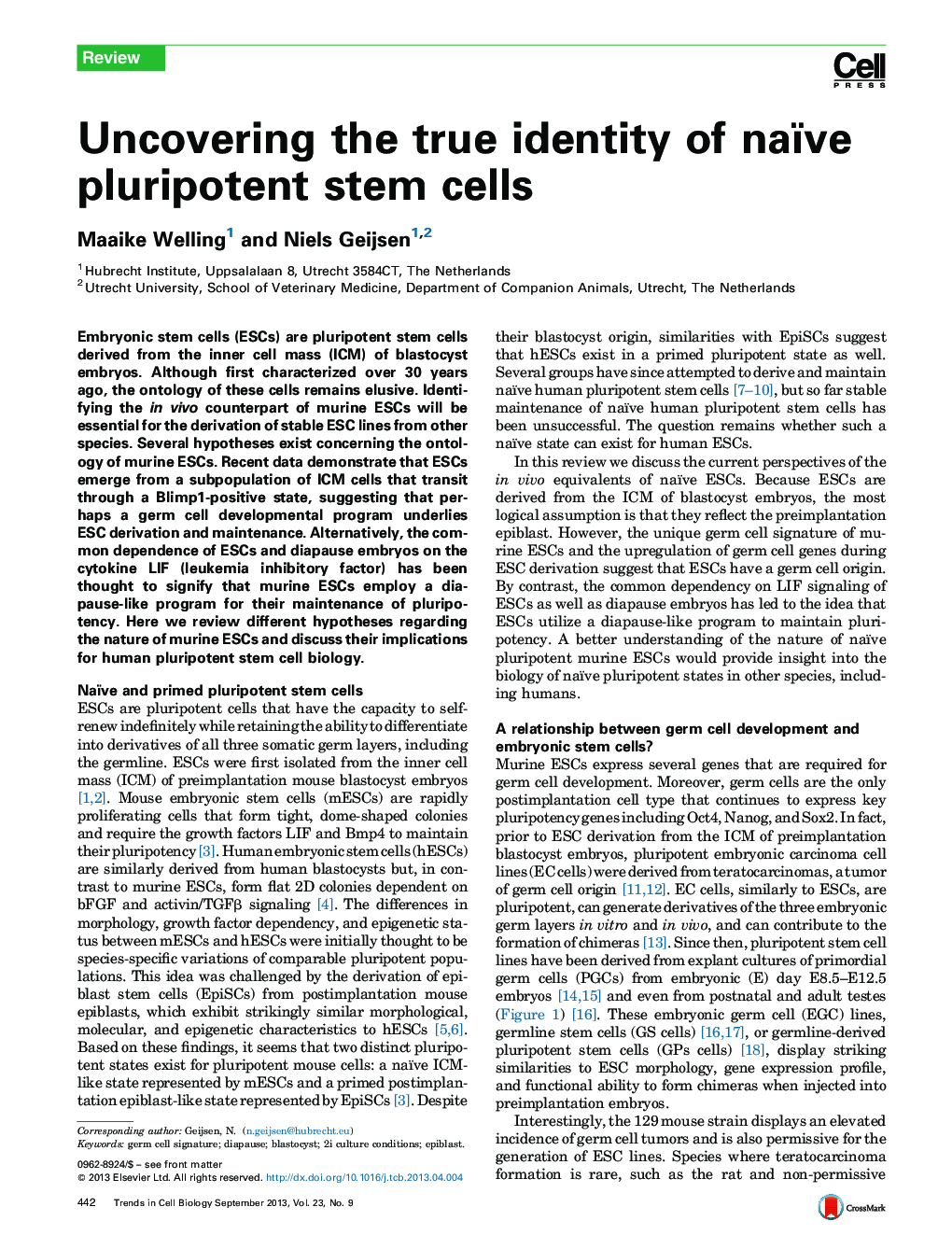| Article ID | Journal | Published Year | Pages | File Type |
|---|---|---|---|---|
| 2204458 | Trends in Cell Biology | 2013 | 7 Pages |
•Heterogeneous ESC cultures are most similar to the in vivo peri-implantation blastocyst.•2i conditions eliminate the need for repression of somatic differentiation by histone methyltransferases.•Identifying the in vivo counterpart of murine ESCs is important for the understanding of naïve pluripotency in other species.
Embryonic stem cells (ESCs) are pluripotent stem cells derived from the inner cell mass (ICM) of blastocyst embryos. Although first characterized over 30 years ago, the ontology of these cells remains elusive. Identifying the in vivo counterpart of murine ESCs will be essential for the derivation of stable ESC lines from other species. Several hypotheses exist concerning the ontology of murine ESCs. Recent data demonstrate that ESCs emerge from a subpopulation of ICM cells that transit through a Blimp1-positive state, suggesting that perhaps a germ cell developmental program underlies ESC derivation and maintenance. Alternatively, the common dependence of ESCs and diapause embryos on the cytokine LIF (leukemia inhibitory factor) has been thought to signify that murine ESCs employ a diapause-like program for their maintenance of pluripotency. Here we review different hypotheses regarding the nature of murine ESCs and discuss their implications for human pluripotent stem cell biology.
